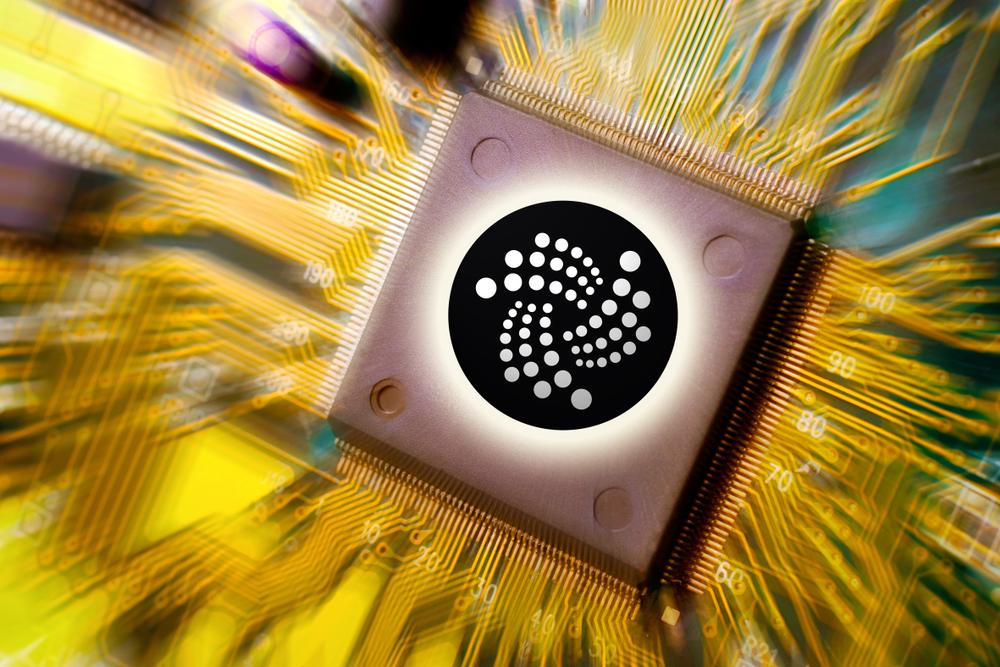
Source: kaprik – Shutterstock
- Software AG, a world-renowned company, plans a comprehensive integration of the IOTA technology, including IOTA tokens, Qubic and MAM.
- A new update has been released for the new lightweight node “HORNET”, giving it the same functionality as the Java node implementation (IRI).
Software AG’s Vice President of Innovation & Architecture, Christoph F. Strnadl, said at the end of November 2019 that he had worked closely with the IOTA Foundation throughout the year. Strnadl announced that although he is not yet able to provide details about the joint project, announcements will follow in the near future.
In a series of new tweets, Strnadl has now raised new hopes for a wide use of the IOTA Tangle and all related technologies, including the IOTA Tokens. Via Twitter Strnadl wrote (freely translated):
Strategically we are looking to integrate all IOTA technology into our portfolio. “Total” here means deliberately including Token, Qubic, MAM and other (future) Layer 2 protocols “on top of the Tangle.
Details in 1st IOTA Meetup Vienna 12.03.20 5:30 pm
He went on to say:
… We are also planning something together with Holger Koether and IF. I have already written a blog about this, but we will only post it when everything is really done. That could be before March and the IOTA MeetUp Vienna.
The Software AG is a leading company from Germany, which operates worldwide and offers independent integration, Internet of Things, analytics, process software and other services. As stated on Software AG’s official website, “more than 70% of the world’s top 1,000 companies” rely on Software AG. The company employs more than 4,700 people, operates in 70 countries and reported a revenue of €866 million in 2018.
With these references, Software AG could become one of the most important partners for IOTA. Admittedly, it is questionable in which context IOTA technology will be used. Nevertheless, Strnadl’s statements promise great things. In another tweet on January 12, he explained that Software AG does not simply add IOTA features in its “back room” and then ask potential customers what they think.
Apparently Software AG has already found companies that want to use the new IOTA-based technology. However, presumably due to non-disclosure agreements (NDAs), Strnadl is currently unable to give any specific names.
Can you name us companies with whom you are working on solutions with #iota or is this all under NDA
— Abu (@Habiboo2107) January 12, 2020
Update for HORNET and X-CUBE-IOTA1
The new node, “HORNET”, presented in mid-December 2019, has received a new upgrade. The node implementation, written in Go, is a lighweight variant of the Java Node Implementation (IRI). Until the new upgrade 0.3.0, the functionality did not quite match the Java implementation, as local snapshots to support nodes with limited storage space were not possible until now. This functionality was added with the new upgrade.
Just released HORNET 0.3.0 with local snapshots. Now we are feature complete with IRI. #iota @GoHornet https://t.co/W00Y56sT1E
— muXxer (@der_muXxer) January 14, 2020
In addition, the developers of X-CUBE-IOTA1 have released a new update to the state of the art. The X-CUBE-IOTA1 is a software extension package that helps developers working on STM32 microcontrollers to take advantage of IOTA. It includes drivers for STM32F4 and STM32F7 and a custom IOTA layer required for network interaction.
X-CUBE-IOTA1 helps developers take advantage of #IOTA on #STM32 MCUs to drive #IoT innovations with the first open-source distributed ledger. Find out more on the #STBloghttps://t.co/tGBbj3ztHq#blockchain #dlt #cryptocurrency #STPartnerProgram pic.twitter.com/83HG5CZkZA
— STMicroelectronics (@ST_World) January 13, 2020
Follow us on Facebook and Twitter and don’t miss any hot news anymore! Do you like our price indices?
This news is republished from another source. You can check the original article here

Be the first to comment